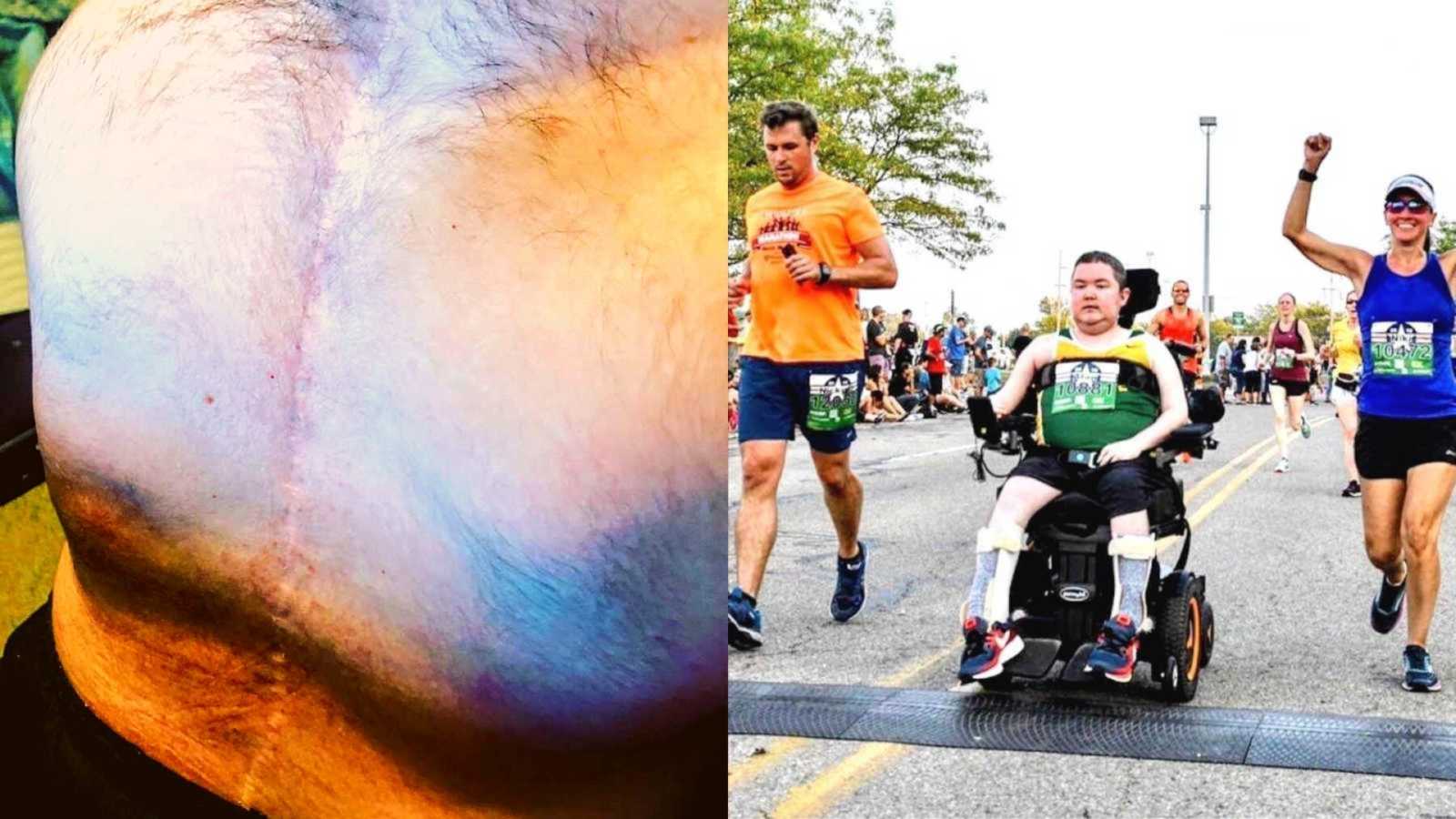“The words ‘Brave’ and ‘Stay Strong’ are tattooed on my left and right forearms, respectively. I use this as a visual reminder I’m capable of enduring a lot of hardships. I’m 26 years old and have a genetic disease called Duchene Muscular Dystrophy.
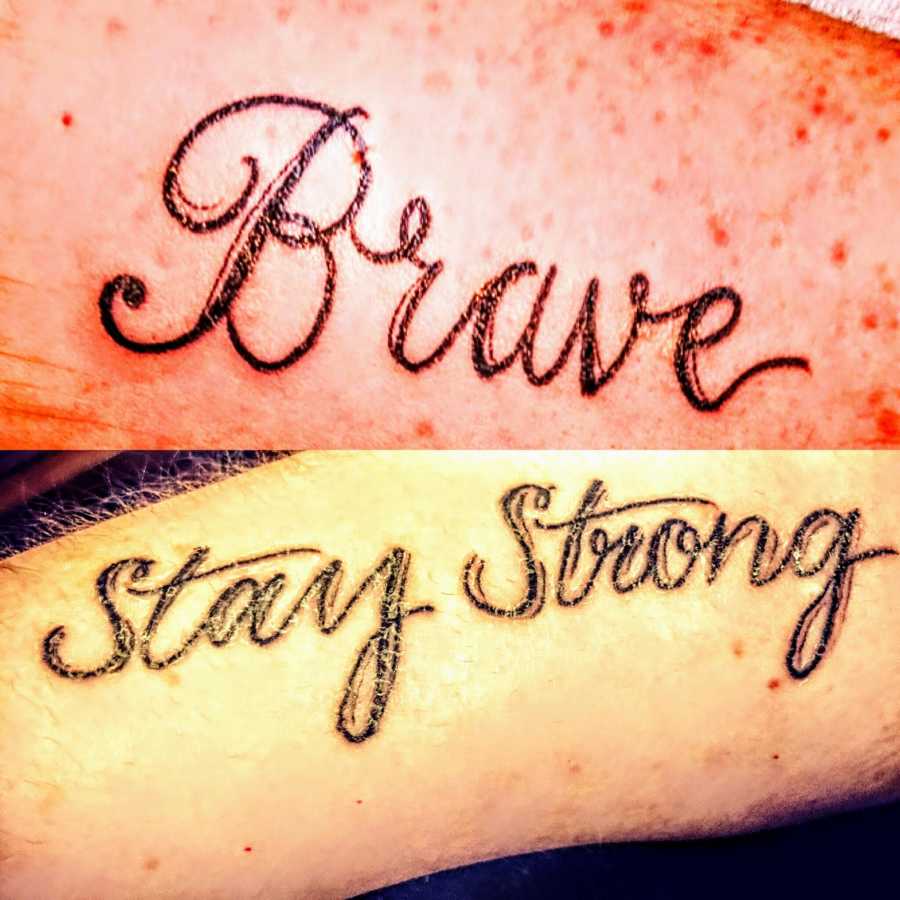
This means my body is lacking a protein named dystrophin, which is like a repair kit for your muscles. It sustains their strength when strained. Without it, I’ve lost muscle function at an accelerated rate, kind of like my body is aging rapidly. As a result, when you do a search online for DMD, you’ll probably read about a prognosis of a 30-year life expectancy at best, usually due to a weakening of the heart and lungs. Losing the ability to walk at a young age is often noted too. I would be lying if I said this hasn’t been a lot to bear, but I would like to share some of my life story to demonstrate that much can be done, even in what may seem to be dire circumstances.
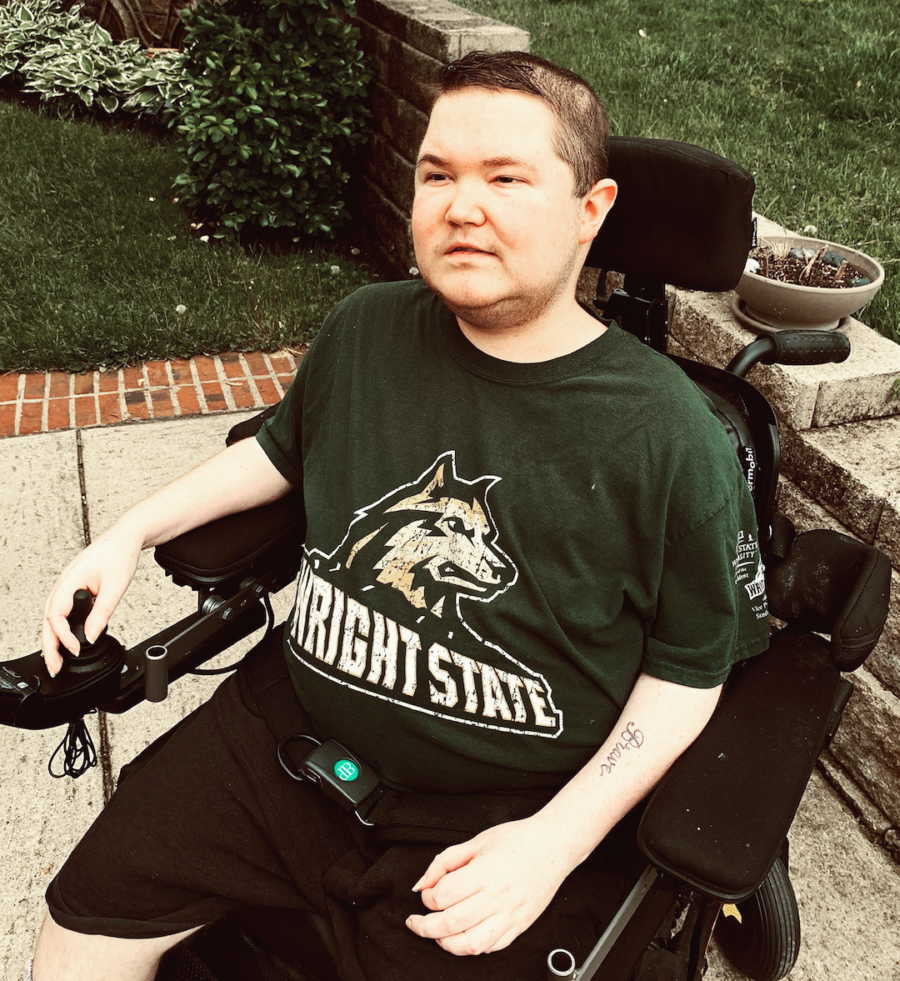
I don’t have a recollection of being diagnosed with DMD because it was at birth. The diagnosis was not a complete shock— there was a 50/50 chance of me having the gene defect with my mother being a carrier. Her two brothers had DMD and passed away, so my parents at least had an idea of what it can look like. In my early years, I was mostly ambivalent to the fact I had this condition. The two most notable signs I was aware of were random falls and being easily fatigued when walking. I wouldn’t say I was bullied by my young peers, but I do remember some kids were not really understanding what was ‘different’ about me. This was internalized by me, I think, because I was extremely shy around those who were ‘able-bodied.’

When I was around 10 years old, walking was starting to become too overwhelming for my muscles, so I gradually started using a wheelchair until it was permanent. At first, I was pushed around the house with rolling computer chairs and was pushed in a manual wheelchair in public. It was 1 to 2 years later I got my first power wheelchair driven with a joystick, restoring some of my independence with being in control of my movements. I somehow took most of these developments in stride, probably because my parents wisely eased me into it.
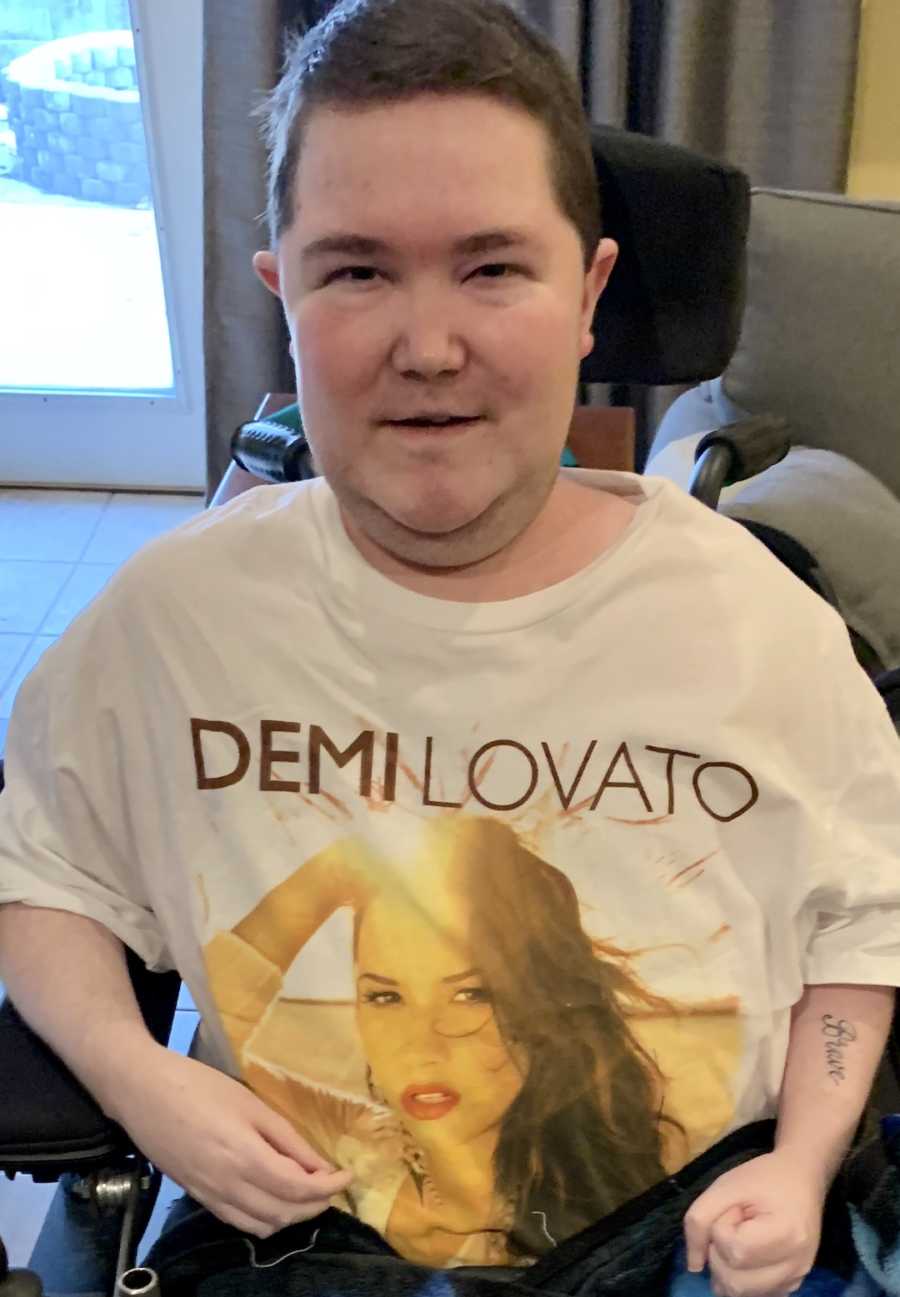
Losing the ability to walk coincided with a timeframe when I was having more prominent spinal curvature, otherwise known as the condition you get screened for at school, called scoliosis. This is common for folks with neuromuscular diseases like myself. The remedy for this is often an operation called spinal fusion, which is the surgical insertion of rods to stabilize the spine. I was only 11 years old when I had the surgery at Cincinnati Children’s, where I still receive some of the best care in the country for DMD. Though I associate this with vivid and fearful moments, along with some lingering trauma, I would have done it all over again, because of the life I believe it gave me. With the scoliosis I had, my quality of life would have suffered, and I might not have been able to accomplish all I have. The thin line of a scar that goes down most of my back is also a reminder of how I will always stay strong, even when I’m wary of it.
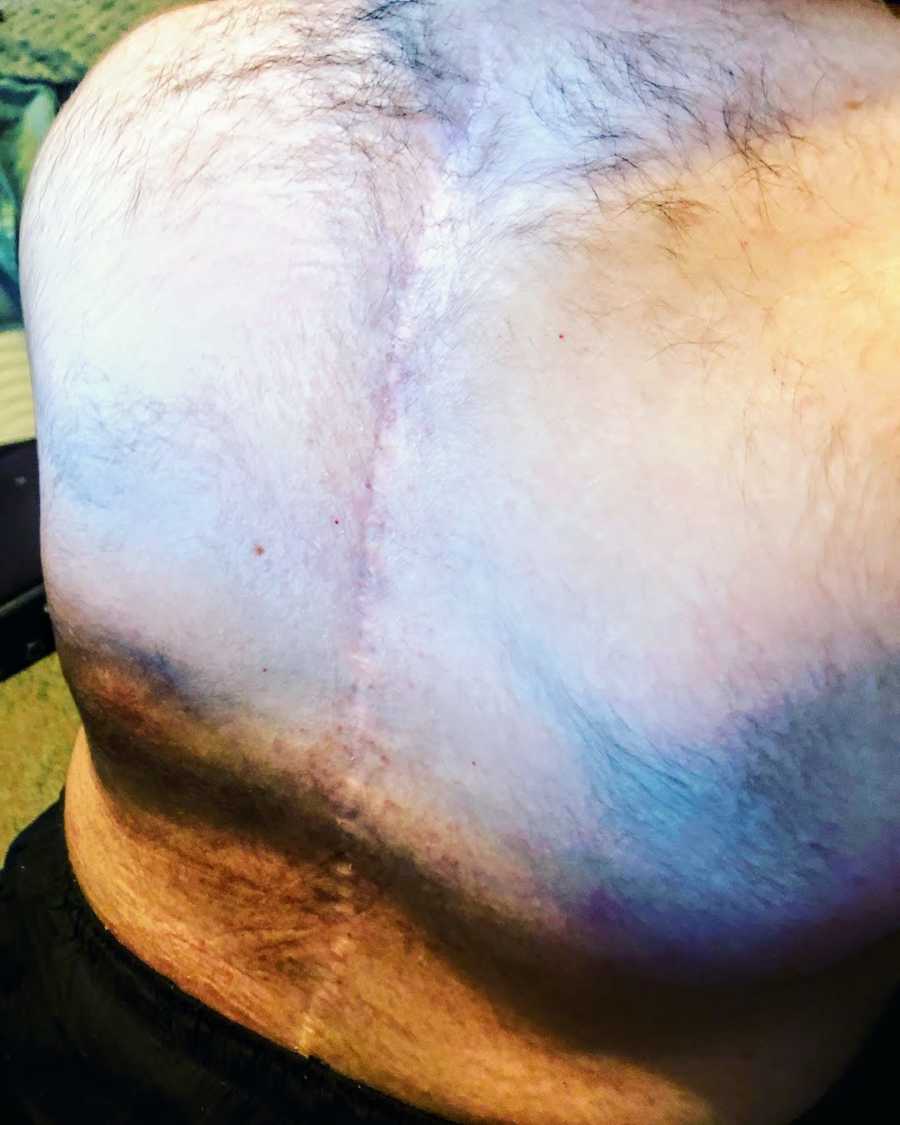
My pronounced shyness persisted through high school. I had aides in each grade, and there were a few in particular who at least provided some good company. There are also several classmates I’m still close friends with. One of my fondest memories comes from my last 2 years of high school when I had the school newspaper as an elective class. My teacher picked up on the passion I had for journalism. She was diligent in instilling skills I practice to this day— such as conducting a quality interview. Those 2 years of writing mostly sports stories might have been the happiest during my pre-college education.

I decided to attend Wright State University near the Dayton, Ohio area I live in today— a school known for its first-class services and accessibility for disabled students. The first 2 years there, I was getting my bearings, taking prerequisites, and wasn’t very social. Then, in my third year, I decided to take a leap and email the editor of the university’s newspaper – the Guardian. They were impressed by my writing samples and gave me a spot in the News department. Having to do interviews proved to be a way to peak the elusive confidence I needed to socialize with my peers.
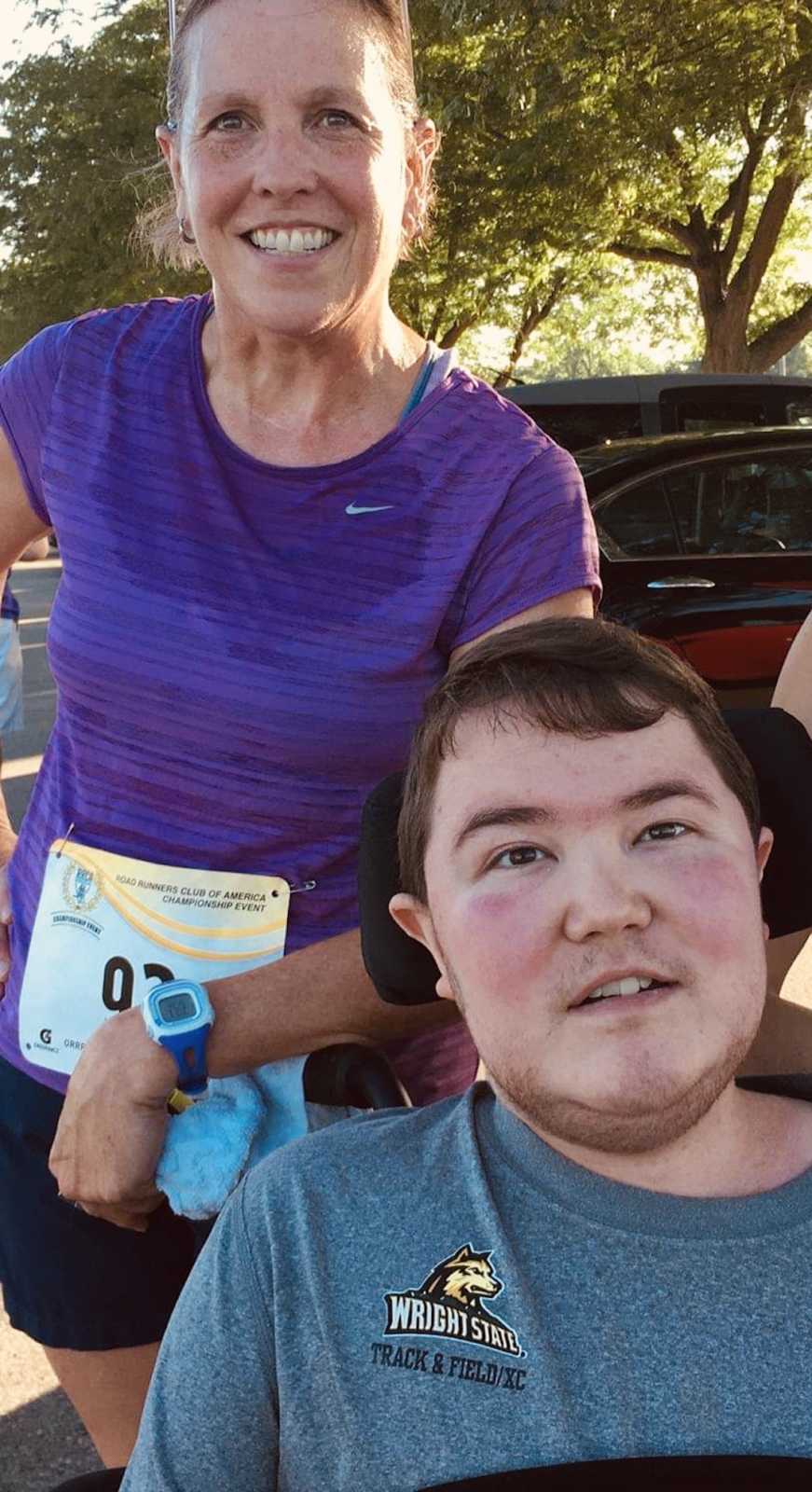
It also didn’t take long for me to start getting paid for my writing. Later that year, I elected to join the Sports department. There, I met that section’s editor, who would become a consummate mentor and lifelong friend. He was instrumental in showing me the ropes of the sports media scene at WSU and beyond. Attending press conferences after the university’s basketball games made me feel like a professional beat reporter. My dwindling shyness during this period also led to me meeting several of my current best friends.
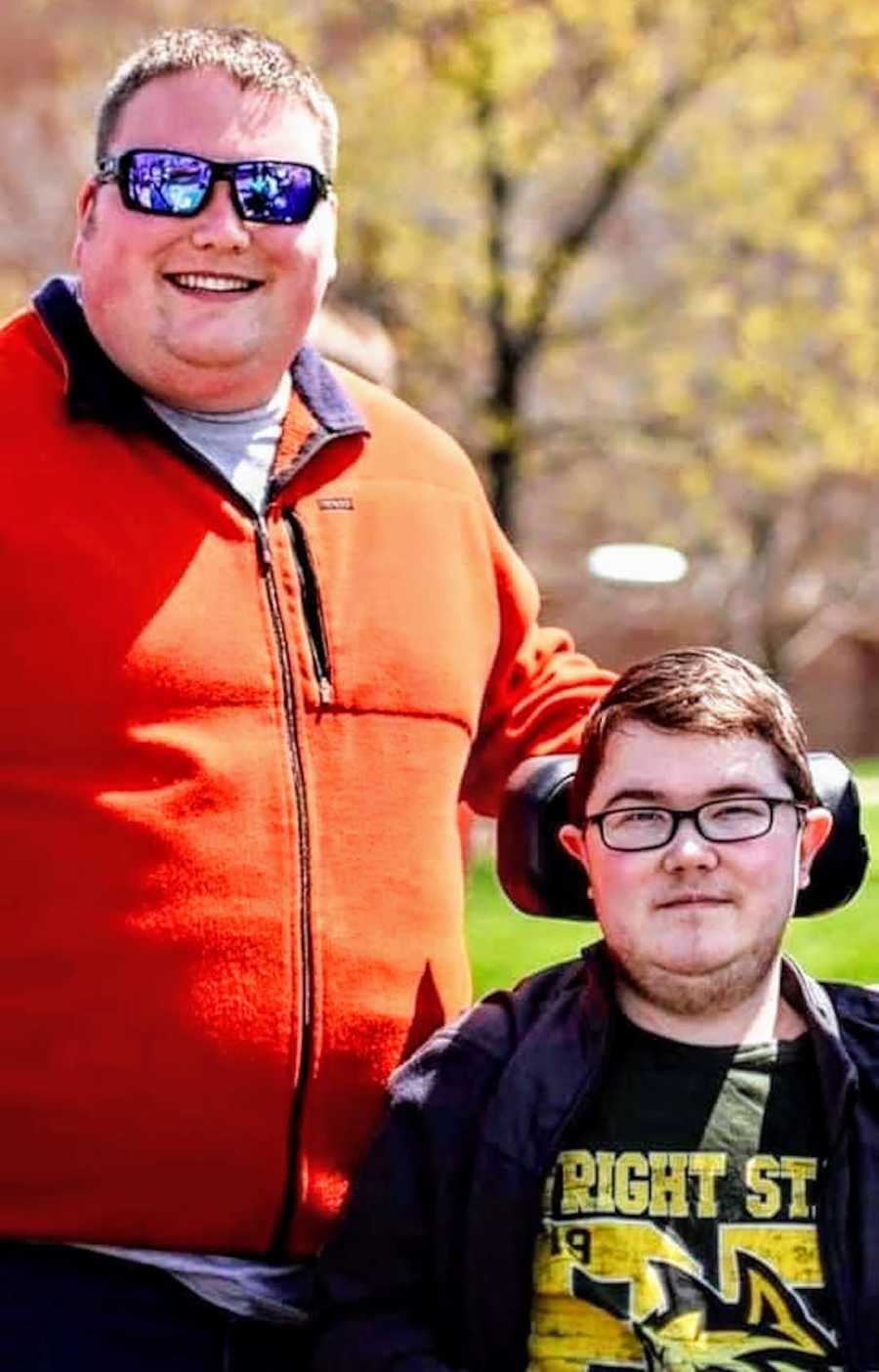
There were several college courses I took that stand out in my mind. I learned about telling written stories from a news and human interest perspective, and I became skilled in doing this with audio and video. One particular class that stands out was during my junior year. It was basically a digital news website run by the students. I had two instructors who really pushed me to achieve a lot in just a semester. After that year’s Super Bowl in 2015, I was asked if I could write a story about a defensive player for the New England Patriots named Malcolm Butler, who had made a game-winning interception. So I figured it wouldn’t hurt to email the team’s media department about this. As fate would have it, there was a phone press conference with the player the next day, and I was provided access. Since I actually didn’t have a cell phone at the time, I used my dad’s flip phone for the interview. I was a little awestruck by hearing other reporters on the line from ESPN and the Boston Globe. But then came my turn, and I asked two questions that elicited thoughtful responses. This was one of the best accomplishments of my life, I believe.
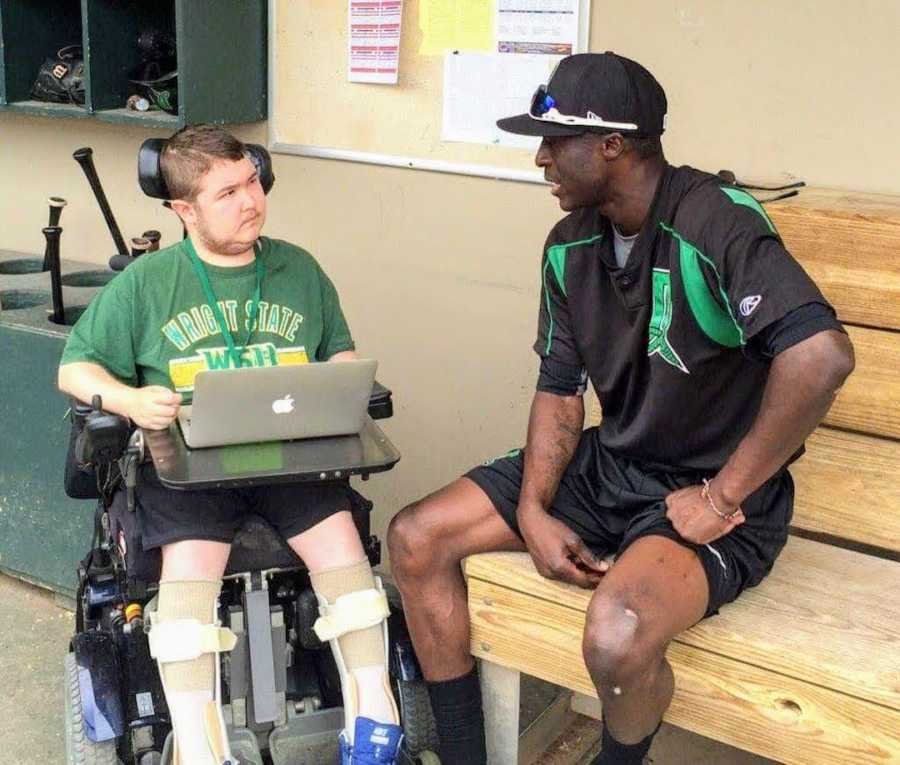
Aside from sports writing, another passion of mine has been the sport of running. That probably doesn’t seem like something I would participate in, but I’m going to explain how. My parents and sister have run competitively at a variety of levels, from high school track to 50-mile ultramarathons. Witnessing this naturally made running something I wanted to be a part of. When I was around 11, I began racing in local 5K’s with my power wheelchair by going full throttle with my hand on the joystick and steering with it. The sense of freedom I felt when racing was priceless. I usually have been able to only go at a speed of 6 miles per hour, but it still has given me, what I’d call, a bit of an adrenaline rush. Reaching those speeds also gave me enough of a boost to easily sit up in my wheelchair and keep myself stable. In the brief seconds I was able to do that, I felt free from the burdens my disease can put on me.
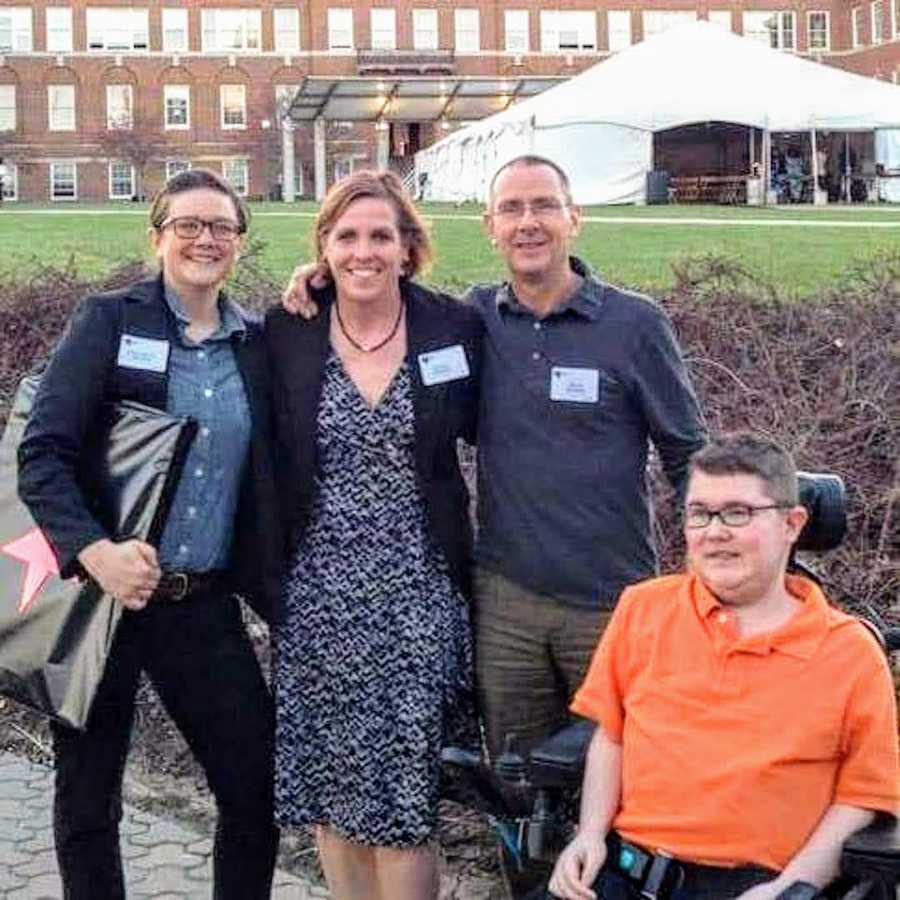
I proceeded to participate in 5K races — primarily in the summers — until the present day. My best time was nearly 28 minutes, but I purely did it for the thrills and friendships gained. Through the sport of running, I have met a number of my closest friends. There was nothing better than having a friend running by my side throughout an event. After these 15 years of active participation in 5K racing, I’m nearing my ‘retirement’ from the sport. It’s become much harder for me to physically do it, and I feel it might not be the best for my heart in this stage of my disease’s progression. Though it brings me some sadness I’m losing the ability to do something I love so much, the people I got to know along the way made it all worth it. Also, I’m still able to write about it. For the last couple of years, I’ve gotten to interview woman’s runners for a blog called Strong Runner Chicks, where I’ve talked to some professional runners and some with motivational stories.

I earned my Bachelor’s degree in mass communication, and I’ve done mostly freelance sports writing for Dayton media outlets. During the time of COVID-19, I haven’t been as active, writing-wise. Just a few weeks ago, I started a series on YouTube I named ‘Rollin’ With Alan,’ where I intend to interview guests knowledgeable in topics that interest me such as sports and disability advocacy.
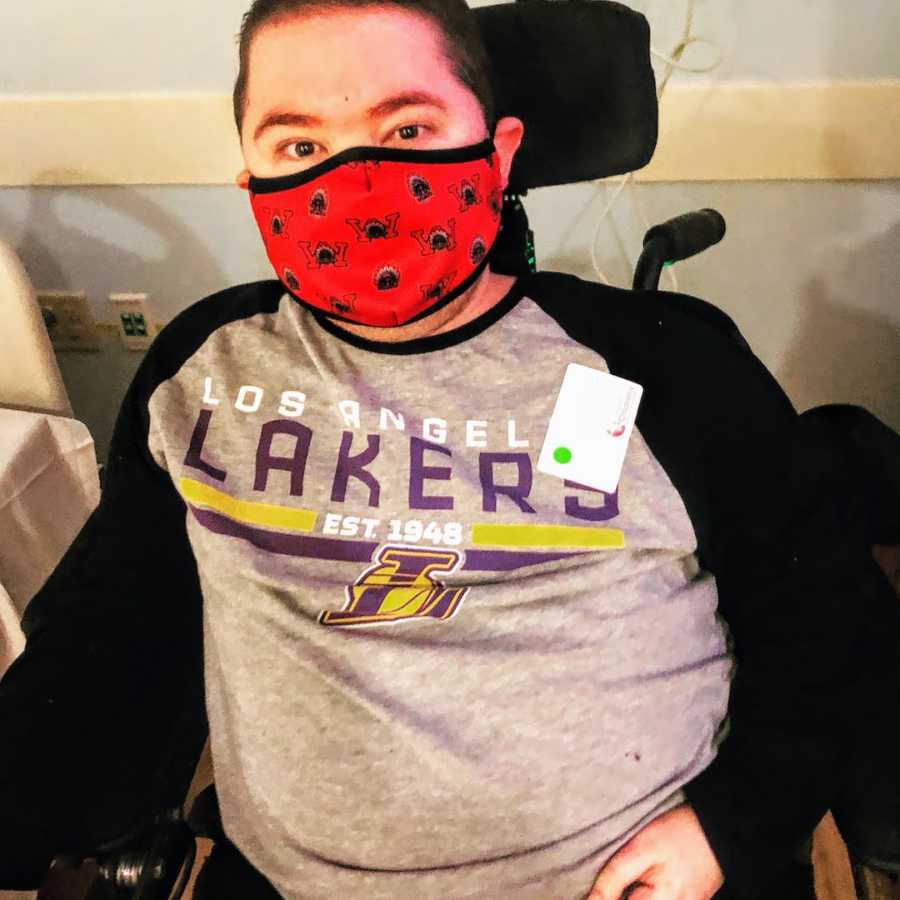
These post-grad years have been a time of personal growth for me mentally, too. I’ve experienced anxiety and depression about my uncertain future. I’m at a point where just finding the physical strength to take a shower with assistance and swallowing food is challenging. I have sought counseling with a few therapists, and continue to do so. Living at home with my parents still is not the most ideal situation sometimes, but their unwavering support can ease some of these struggles. The same can be said about my close friends and sister working as a lawyer in Chicago, who I talk to on Skype every week.
I’d say I’ve developed more of a sense of acceptance with my circumstances and being grateful for all I still have. My disease will never define me. Brave and strong is what I always will be.”
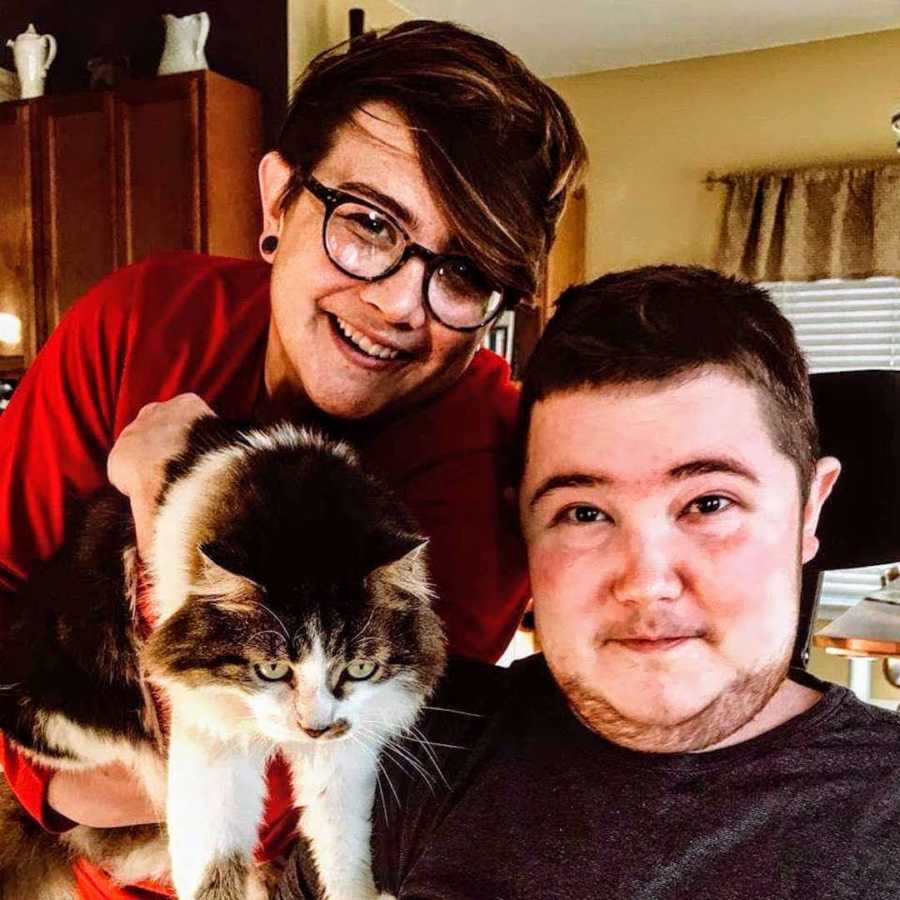
This story was submitted to Love What Matters by Alan Hieber of Ohio. You can follow his journey on Instagram and Youtube. Submit your own story here, and be sure to subscribe to our free email newsletter for our best stories, and YouTube for our best videos.
Read more stories like this:
Provide beauty and strength for others. SHARE this story on Facebook with friends and family.

